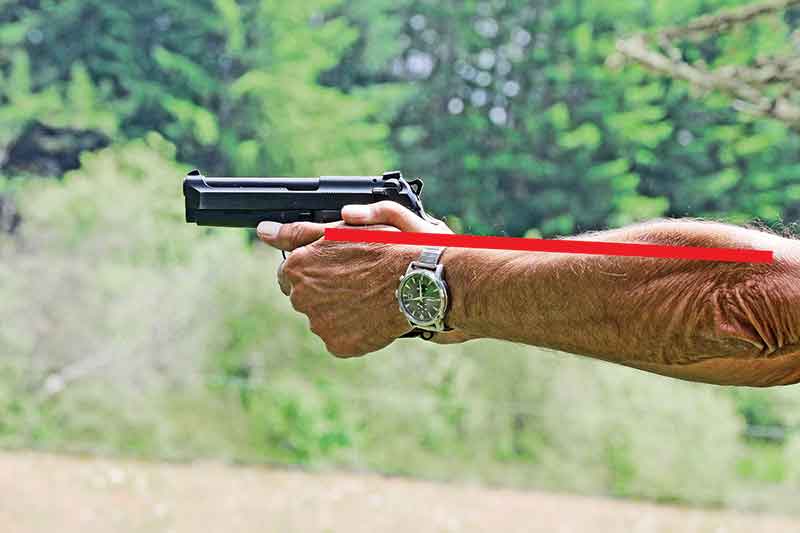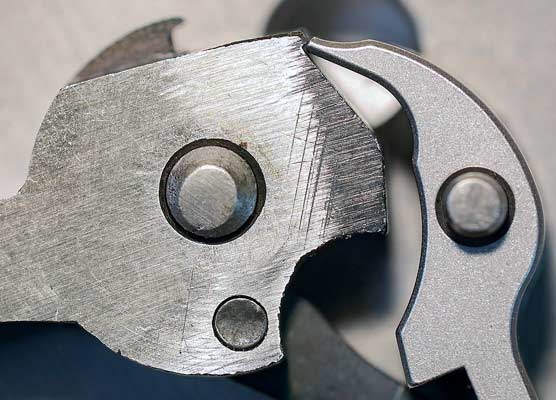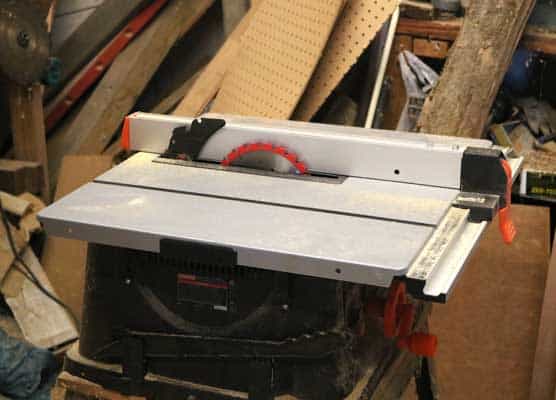The Importance of the Locked Wrist
The coming of dashcams and later, bodycams gave us a treasure trove of visually recorded gunfights for study. Every now and then we see one in which an L.E.O.’s pistol malfunctions. One cause of this is firing from an unlocked wrist due to poor training or an awkward position necessitated by exigent circumstances. Even when it doesn’t cause the gun to malfunction, the unlocked wrist impairs shooting speed and perhaps even accuracy.
We seek accuracy when we shoot a handgun, but we may also want — or need — speed. For speed with repeatable accuracy, a locked wrist is pretty much mandated, and it’s one of the most common corrections I have to make when teaching on the firing line.
In the late 19th century and into the early 20th, we find pictures of marksmen holding their pistols and revolvers with elbow bent sharply downward, and the wrist bent to near maximum flexion. Perhaps drawing the gun that much closer to the eyes made the primitive, tiny sights of those days easier to see, because the best marksmen of the era certainly registered some good scores. But target shooting back then was primarily slow fire. But fast shooting with hard kicking guns demands a locked wrist.
Rigid Structural Unit
In the late Col. Jeff Cooper’s 1961 “Complete Book of Modern Handgunning,” we find this commentary on page 75: “All successful shooters of the big auto, on targets and especially in combat shooting, develop a very firmly locked wrist. The gunhand-wrist-forearm assembly becomes trained into what is, in effect, a rigid structural unit. This not only provides a more uniformly stable base for the recoiling parts, but it allows instant recoil recovery for rapid fire or burst firing. A loose wrist is an almost sure sign of an ineffective gunman, and this is most apparent in the case of the .45 auto.”
And again, on page 116, “When you have achieved a solid, comfortable grip, freeze that wrist. Your muscles must not be placed under unnecessary stress, but they must become trained to ‘set,’ locking up the gun mount, if you are ever to be a good pistol shot.”
The archaic stance we mentioned at the beginning of this article was done primarily with single-shot pistols and revolvers. The coming of the semi-auto put another nail in that old technique’s coffin, because of what is commonly called the “limp wrist malfunction” or, less commonly, the “broken wrist malfunction.” The autoloading pistol was designed on the assumption the slide would work against the rigid abutment of a firmly held frame. When the wrist unlocks, and whipsaw recoil follows, some of the force running the slide dissipates through the moving frame and gun hand, impairing cycling function. The result may be a failure of the next round to go into battery, or an extraction or ejection failure, perhaps with a stove-piped casing stuck in the ejection port.
Even Shotguns
This has been noticed with other autoloading firearms, notably autoloading shotguns when fired from an armpit tuck or hip-shooting stance. The whole shotgun recoils to the rear without the butt being held in place by the shoulder. The receiver moves backward along with the bolt, and the bolt runs out of inertia and can’t complete the cycle.
Some 30 or 40 years ago when “service auto versus service revolver” was an active debate, the revolver’s immunity to limp-wrist malfunctions was one of the strongest arguments in its favor. It’s still among the reasons cited by many officers today who choose to back up their duty pistol with a small revolver instead of an auto of equivalent size.
The locked wrist isn’t just for better shooting and better scores. In terms of both reliability and speed of accurate fire, the locked wrist is a critically important element in defensive firearms training.







